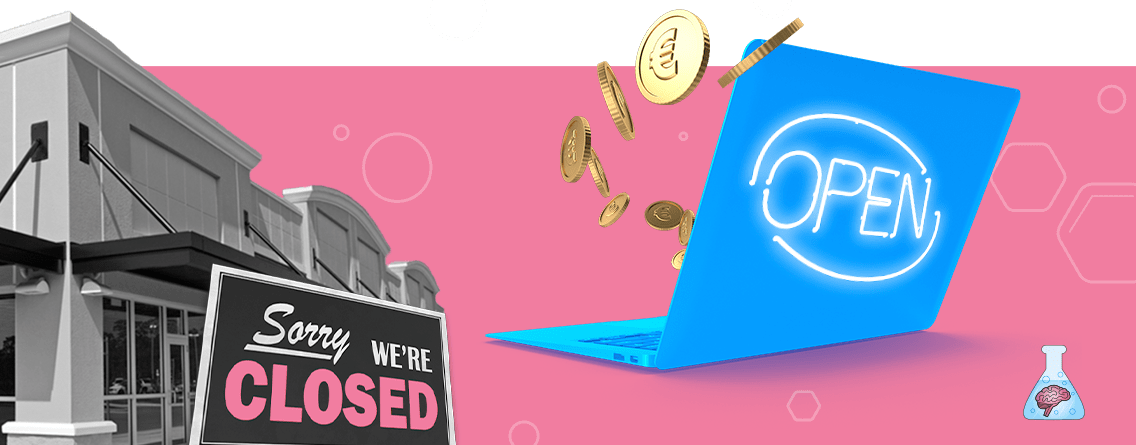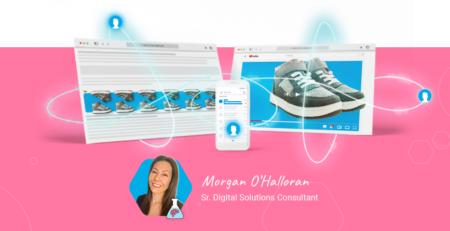How retail businesses can capitalize on the COVID-19 boost in online sales
The retail landscape has been completely transformed by the impact of COVID-19, and changing lockdown restrictions continue to influence shopping behaviour internationally. With store closures, social distancing and mask requirements, it’s unsurprising that more shoppers are avoiding physical stores and preferring to shop online. This shift in shopping habits is expected to drive an overall growth of 18% for ecommerce throughout 2020.
New consumer priorities
Throughout enforced lockdowns, consumers have had the opportunity to embrace online retail, with 70% of shoppers planning to continue shopping online at the same or an increased rate after the final restrictions are lifted.
In addition to this online drive, the past few months have shone a light on a number of key societal and environmental movements, forcing shoppers to reflect on their buying habits and reassess their retail priorities. Due to the pandemic, there has been an increased focus on hygiene and health, with brands being expected to show that they’re taking the necessary measures to minimize cross-contamination and serve customers responsibly.
More shoppers are also increasingly aware of the environmental impact of retail, choosing to shop with brands who exhibit their commitment to sustainability in their delivery and packaging options.
How can retailers be prepared?
As the world begins to resemble pre-pandemic normality, brands can continue driving their e-commerce growth and maximise returns by tapping into what their customers have shown they want from retailers.
Brands must prioritize digital expansion in order to adequately serve the increased number of online consumers and align online and offline activity effectively. Digitizing all possible elements of the retail operation and supply chain is beneficial for a number of reasons: automating order packaging and deliveries will reduce the risk of spreading COVID-19, and in the case of an outbreak your operation won’t collapse with fewer human employees on-site.
Customer engagement and retention
Understanding what resonates with your audience will allow you to personalize each stage of the purchase journey as much as possible, which will be essential for driving growth by engaging users. Combining this personalization with innovative methods and omni-channel initiatives is a great way to reach audiences at more touchpoints and drive consumers onsite.
For example, expanding into new channels and creating virtual alternatives to physical services are great ways of keeping customers engaged and encouraging them to convert. The fitness sector has been a fantastic example of how businesses can effectively adapt to serve their audience, and thrive while doing so. Retailers can take inspiration from these alternative classes and provide an online shopping experience that feels personalized and tailored to each individual.
Building customer loyalty online is vital for driving growth. Brands who can offer a convenient experience accompanied by good customer service will win out over their competitors. Efficient delivery and click & collect services provide consumers with flexible options that can easily fit into their changing lifestyle. Meanwhile, customer service communication can be optimised by using 24/7 chatbots so that support is always available and immediate. Reviewing cross-channel brand communication and executing an effective response system is essential in delivering a convenient customer experience that shoppers will want to use again.
On-site optimization
Optimizing the online shopping experience is crucial for driving growth and retaining customers. It’s essential to ensure that the website can cope with an increase in traffic, orders can be fulfilled, and that customers will actually convert when driven to your website.
A comprehensive CRO (conversion rate optimization) audit is an effective starting point in delivering a user experience that is friction free and easy to navigate – this extends to auditing every digital touchpoint throughout the customer journey. Through this, quick fixes can be implemented to prevent any money leaking from bugs.
Measurement and analytics
A robust analytics setup will allow brands to track audience data and monitor product performance, both of which are essential in order to gain valuable insights. Using this information, brands can deliver marketing that aligns with consumer needs and stand out in the competitive retail landscape.
Connecting internal and external customer data in line with privacy restrictions will maximise historic data, meanwhile optimizing the current attribution model will allow all this valuable data to be fed back into the overall marketing mix in order to improve future activity and accurately track performance.
Be ready to respond flexibly
In an age of unpredictability, brands must remain flexible and expect to quickly adapt their entire operation throughout the next year. In practical terms, this means retailers must create robust emergency plans and have effective response systems in place to ensure they can continue to serve their customers.
Brands must understand that consumer needs are evolving, and this change is a huge opportunity for growth. As more consumers continue to favour online shopping, retailers should automate as much as possible, optimize the digital journey, and prioritize digital investments to stay ahead of competitors and keep their audience engaged.




